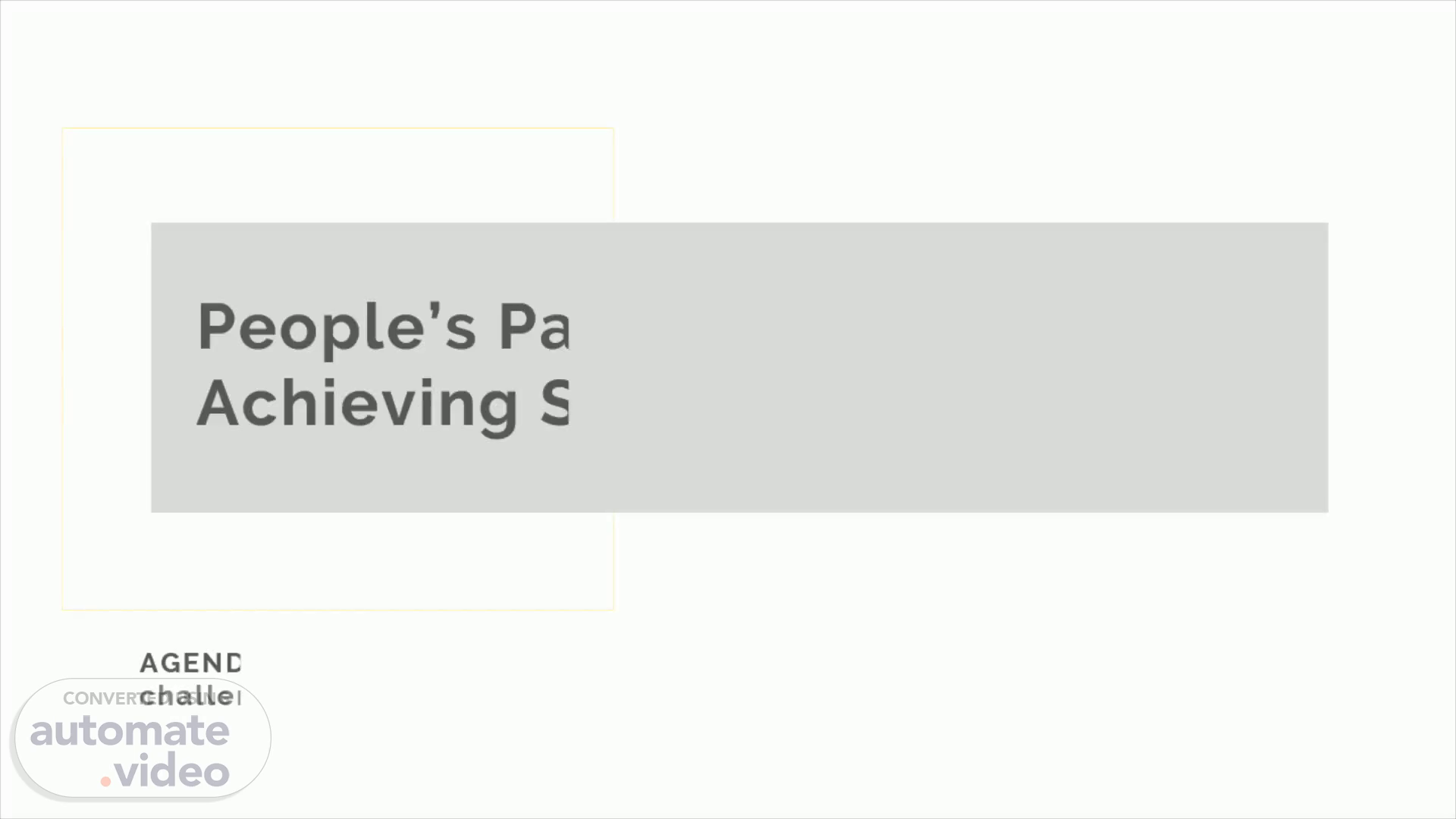
E-waste (Management) Rules 2022 Effective from 1st April 2023
Scene 1 (0s)
AGENDA : To familiarize with the various SDG goals, how to achieve it , challenges & solutions.
Scene 2 (11s)
Content. Introduction What are SDGs? SDGs Mission By 2030 People’s participation in achieving SDGs Ways To Achieve SDGs Challenges & Solution Conclusion.
Scene 3 (22s)
Introduction To Sustainable Development Goals. Sustainable Development Goals (SDGs are a set of 17 global goals adopted by the United Nations General Assembly in 2015. These goals aim to end poverty, protect the planet and ensure that all people enjoy peace and prosperity by 2030. Achieving these goals requires the collective effort of governments, businesses, civil society organizations, and individuals. In this presentation, we will focus on the role of individuals in contributing to SDGs..
Scene 4 (47s)
SDGs Overview. Training material. 4. No Poverty- to end poverty in all forms and dimensions, including extreme poverty Zero Hunger - to end hunger, achieve food security and improved nutrition and promote sustainable agriculture Good health and well being Quality Education- Ensure inclusive & equitable quality education for all ages Gender Equality - Empower all women and girls Clean Water & Sanitation Affordable & Clean energy- access to sustainable, reliable and modern energy to all.
Scene 5 (1m 22s)
SDGs Overview. Training material. 5. 15. Life on Land- to protect, restore and promote sustainable use of terrestrial ecosystem, sustainably manage forest, combat desertification and halt and reverse land degradation and biodiversity loss 16. Peace, Justice and Strong Institution- Promote peaceful & inclusive society, Justice to all and build effective institutions at all levels 17. Partnership for goals - Strengthen global partnership for sustainable development.
Scene 6 (1m 44s)
SDGs Mission By 2030. Training material. 6. Goal 1: No Poverty The first goal of SDGs is to eradicate extreme poverty by 2030. Individuals can contribute to this goal in various ways, such as donating to poverty alleviation programs, volunteering at local charities, or supporting fair trade products. Moreover, individuals can also advocate for policies that reduce poverty, such as increasing access to education and healthcare, promoting gender equality, and creating job opportunities for marginalized communities. Goal 2: Zero Hunger The second goal of SDGs is to achieve food security and improve nutrition for all. Individuals can contribute to this goal by reducing food waste, supporting local farmers and markets, and choosing sustainable food options. Furthermore, individuals can also participate in community gardening projects, donate to food banks, and advocate for policies that promote sustainable agriculture and food systems..
Scene 7 (2m 22s)
SDGs Mission By 2030. Training material. 7. Goal 3: Good Health and Well-being The third goal of SDGs is to ensure healthy lives and well-being for all. Individuals can contribute to this goal by adopting healthy lifestyles, such as exercising regularly, eating a balanced diet, and avoiding harmful substances. Additionally, individuals can also support healthcare initiatives, raise awareness about mental health issues, and advocate for policies that improve access to quality healthcare services. Goal 12: Responsible Consumption and Production The twelfth goal of SDGs is to promote responsible consumption and production patterns. Individuals can contribute to this goal by reducing their carbon footprint, minimizing waste, and choosing eco-friendly products. Furthermore, individuals can also support sustainable businesses, participate in recycling programs, and advocate for policies that promote circular economy and sustainable production practices...
Scene 8 (2m 58s)
People’s Participation in Achieving SDG’s. Grassroot level Civil Society organizations and NGO’s Mobilizing communities and promoting awareness.
Scene 9 (3m 12s)
Ways To Achieve SDG’s. Community Clean up events - such events help to achieve SDG 6 (Clean Water and Sanitation) and SDG 14 (Life below Water) Volunteering - for a local organization for education and health care can contribute to SDG 3( good health & well being) and SDG 4 (Quality Education) Social Media Campaigns Sustainable Lifestyle choices - Reducing waste, using eco-friendly products, and conserving energy can contribute to SDG 12 (responsible consumption & production) & SDG 13(Climate action) Participatory Governance- Actively engaging in decision making process.
Scene 10 (3m 48s)
Challenges & Solutions. Lack of political commitments political commitments are essential for engaging stakeholders, promoting accountability, and fostering cooperation and coordination among different actors. Lack of funding & resources Between US $3.3 - 4.5 trillion per year need to be mobilized to achieve the 2030 agenda of SDG, there is a funding gap of US$ 2.5 - 3 trillion for developing nations (Source: UNCTAD World Investment Report, 2014) Importance of promoting partnership and collaborations between stakeholders Partnership and multi-stakeholder collaboration between business, NGOs, Government, donors and communities at all level are essential for achieving the SDGs.
Scene 11 (4m 16s)
Conclusion. The SDGs are an ambitious plan to transform our world and tackle some of the most pressing challenges of our time. Achieving the SDGs requires a coordinated effort by governments, civil society, the private sector, and individuals to work towards a more sustainable future for all. Ultimately, achieving the SDGs by 2030 is critical for creating a more just, fair, and stable world. It is only when all people have access to resources, opportunities, and basic human rights that we can expect to see peace, security, and prosperity. 51 billion tons of GHG emission per annum. Successful achievement of SDGs will support to achieve NET ZERO targets.
Scene 12 (4m 46s)
Thank You. Training material. 12.